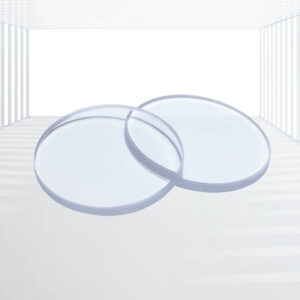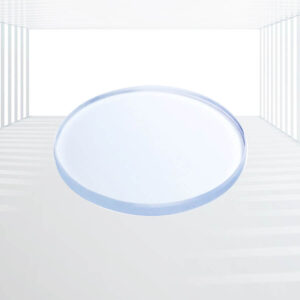Sapphire Windows
Unrivaled Hardness and Ruggedness:
- Sapphire has a Mohs Hardness of 9, making it the second hardest material after diamond.
- Extremely resistant to scratches and abrasions, ensuring clear optical apertures even under attack from sand/grit.
- Ideal for applications involving splattering abrasive particles, such as drilling viewport windows, protective laser processing windows, and gun sights.
Thin and High-Pressure Resistant:
- Due to firm internal covalent bonding, sapphire windows can be manufactured thinner without fracture compared to dielectric materials.
- Capable of withstanding high pressure, making them suitable for aviation and deepwater contexts.
High-Temperature Tolerance:
- Sapphire has a working temperature limit of up to 1600℃ and a melting point of 2000℃.
- High thermal conduction provides a unique advantage in handling high-temperature situations compared to other optical materials.
- Great options for high-temperature plasma chambers, combustion chambers, etc.
Solid Chemical Inertia:
- Sapphire exhibits chemical inertia to common acids/alkalines, with the exception of hot caustic salts.
- Outperforms other materials in coping with corrosive chemicals and erosive atmospheres.
- Suitable for applications in pharmaceuticals, medicines, and chemical facilities.
Broad Spectral Transmission:
- Sapphire windows offer a broad spectral transmission range of 150nm-5500nm.
- Compared to N-BK7 and UV Fused Silica, sapphire excels with better UV functions, broader IR transmission, and less IR absorption.
- Ideal for critical optical operations in multi-spectrum applications.
Applications: Optical Applications, Protective Applications, Extreme Environments, Chemical and Pharmaceutical Industries, etc.


